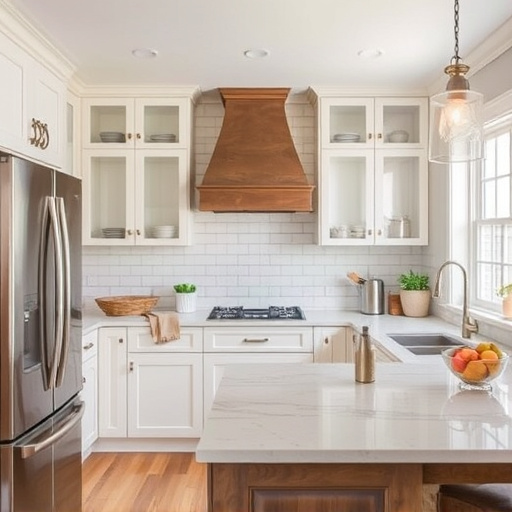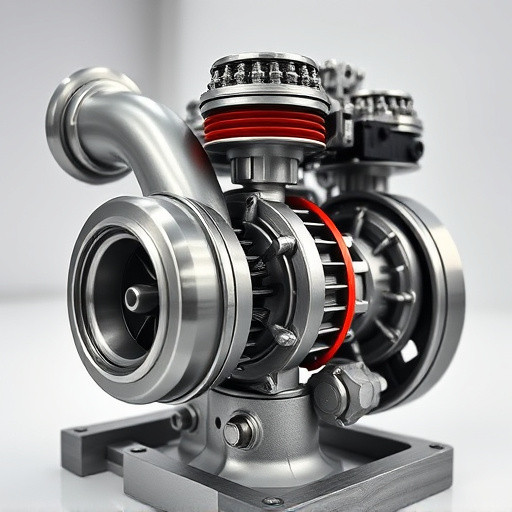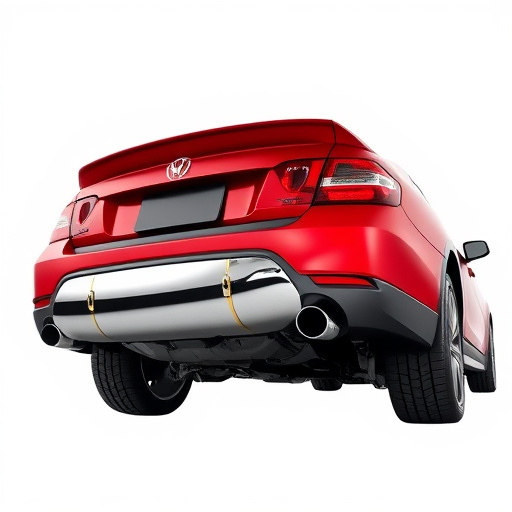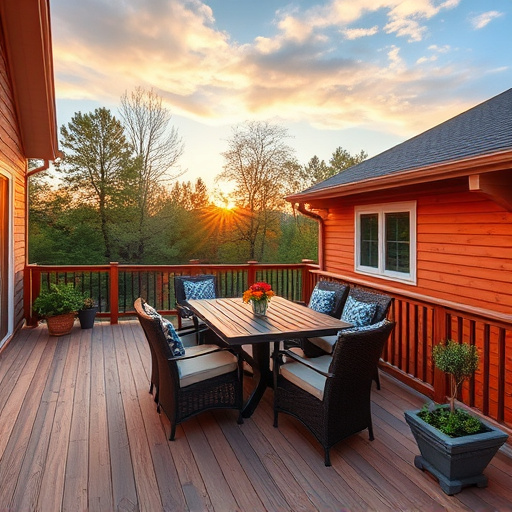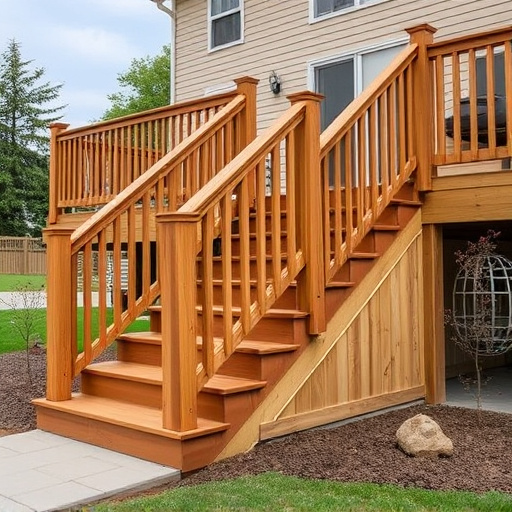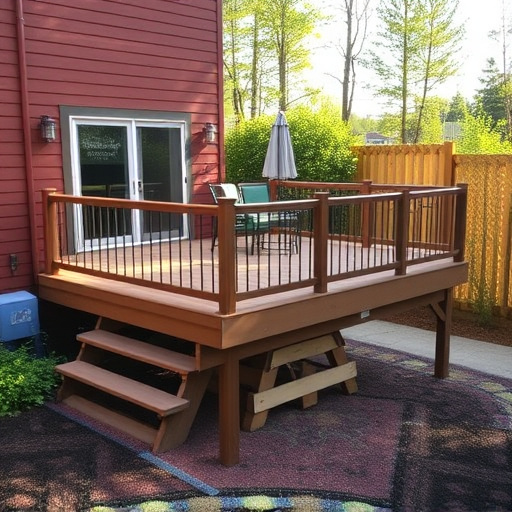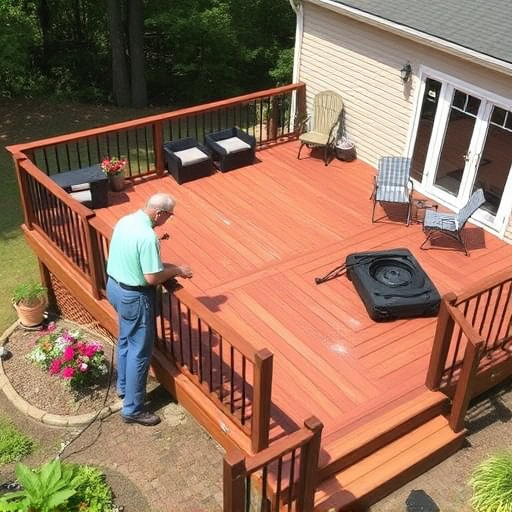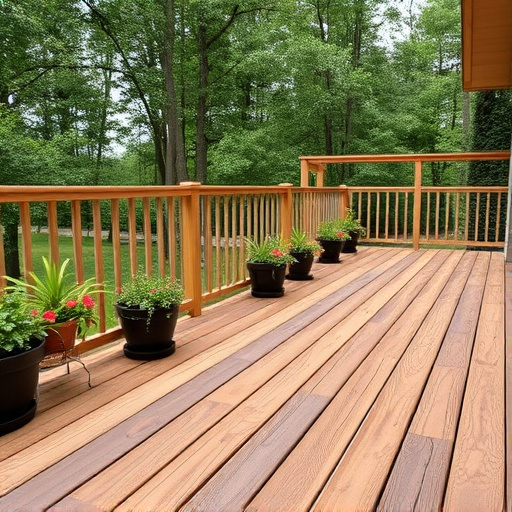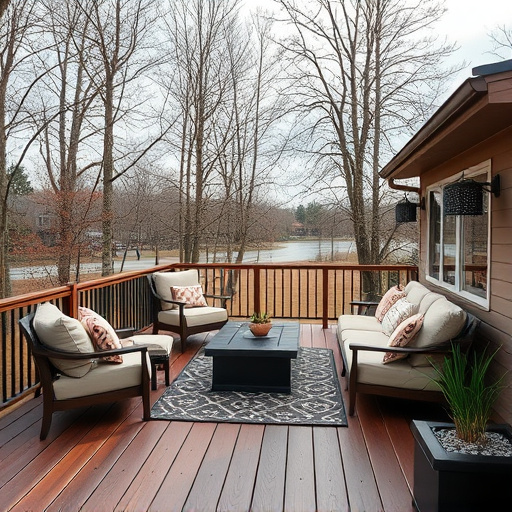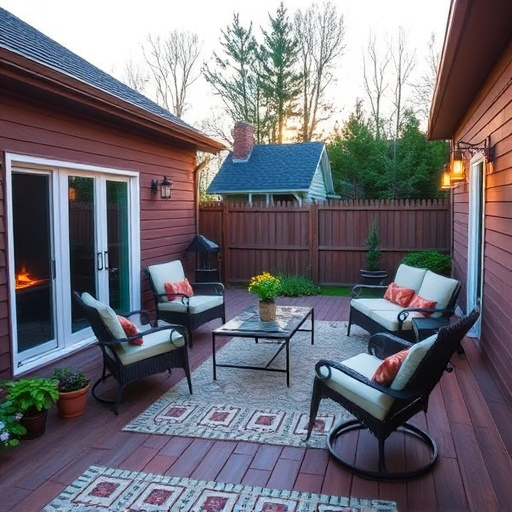Selecting the best deck boards requires understanding your climate. While wood is aesthetically pleasing, it needs regular upkeep. Composite and vinyl decks offer superior durability and low maintenance. Consider regional factors like rainfall, sunlight intensity, and winter conditions to choose materials resistant to fading, cracking, warping, and extreme temperatures, ensuring a robust, reliable, and long-lasting deck for both commercial and residential projects.
Selecting the right deck boards is essential for creating an outdoor living space that withstands the test of time and diverse climates. This guide explores the key considerations when choosing deck materials, focusing on performance in varying weather conditions. From understanding material resilience to navigating regional specifics, we’ll walk you through a process to ensure your deck boards are up for any challenge. By considering factors like durability, maintenance, and environmental impact, you can make an informed decision that suits your climate and style.
- Understanding Deck Board Materials and Their Performance in Diverse Climates
- Factors to Consider When Choosing Deck Boards for Specific Weather Conditions
- Case Studies: Effective Deck Board Selection for Varied Climates
Understanding Deck Board Materials and Their Performance in Diverse Climates
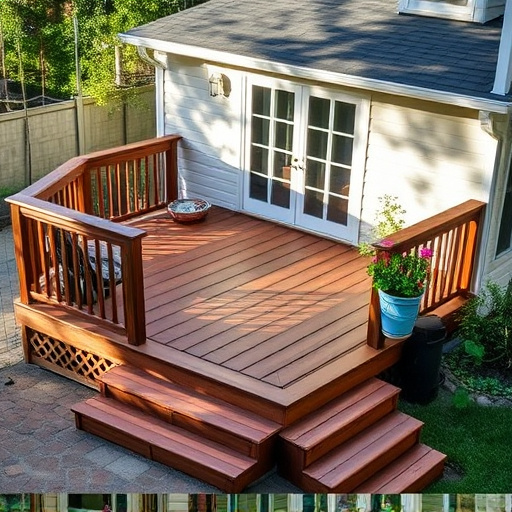
Understanding Deck Board Materials and Their Performance in Diverse Climates
When selecting deck boards for different climates, it’s crucial to understand the unique characteristics of each material. Wood is a popular choice due to its aesthetic appeal and natural weather resistance, but it requires regular maintenance. Composite deck boards, on the other hand, offer low-maintenance benefits with enhanced durability against fading, cracking, and warping, making them ideal for harsher climates. Vinyl deck boards are another excellent option, known for their extreme longevity, high impact resistance, and ability to withstand extreme temperatures without expanding or contracting significantly.
For commercial roofing and exterior home improvements projects alike, the right choice of deck boards can greatly impact the overall performance and longevity of a structure. Consider your climate’s specific challenges—such as heavy rainfall, intense sunlight, or cold winters—when selecting materials that will provide effective and reliable roofing solutions. Incorporating these factors into your decision-making process ensures a sturdy, low-maintenance deck that enhances your outdoor living spaces for years to come.
Factors to Consider When Choosing Deck Boards for Specific Weather Conditions
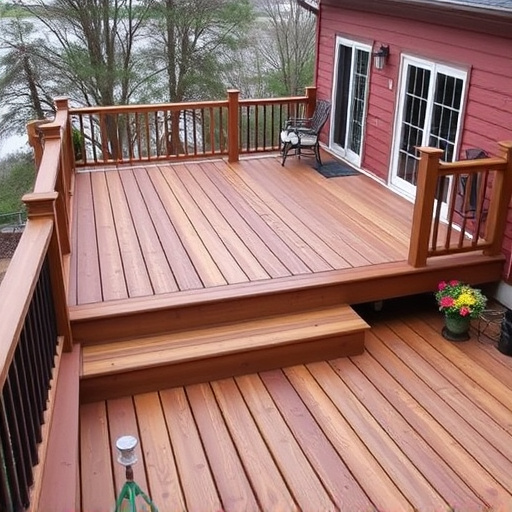
When selecting deck boards for different climates, understanding specific weather conditions is key. Factors like temperature extremes, rainfall patterns, and UV exposure play a significant role in determining the longevity and performance of your deck boards. In colder climates with harsh winters, look for boards treated against frost and ice damage, as well as those resistant to warping due to temperature fluctuations. High-quality, durable materials such as composite or certain types of wood are ideal for these regions.
In areas prone to heavy rainfall and humidity, water resistance is crucial. Commercial siding options and roofing materials designed for residential roofing often feature advanced waterproofing technologies. For regions with high UV exposure, like sunny coastal areas, choose boards that offer protection against fading and cracking caused by intense sunlight. Roofing and siding experts recommend products specifically formulated for such conditions, ensuring your deck boards maintain their aesthetic appeal and structural integrity over time.
Case Studies: Effective Deck Board Selection for Varied Climates
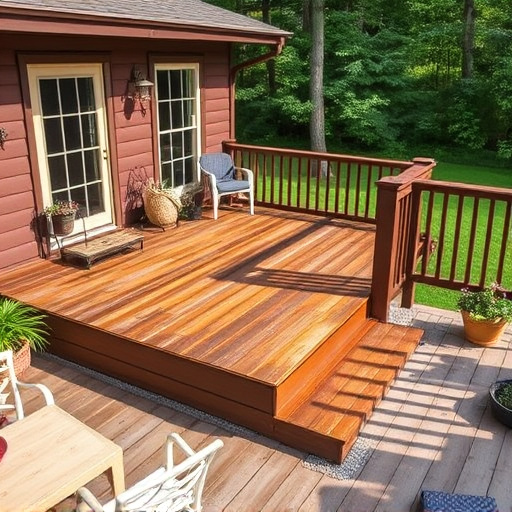
In diverse climates across various regions, effective deck board selection is crucial for ensuring durability and aesthetic appeal in exterior home improvements. For instance, in coastal areas prone to high humidity and salty air, treated, weather-resistant cedar or composite boards are ideal choices. These materials naturally resist rot and insect damage, making them superior options compared to untreated wood. Regular maintenance such as regular cleaning and sealing can further extend their lifespan.
On the other hand, regions with extreme temperatures and varying precipitation patterns necessitate different strategies. In cold climates, for instance, deck boards must withstand frost, snow, and freezing conditions without splitting or warping. Vinyl and composite materials offer excellent insulation properties and stability in such environments. Conversely, areas with intense sunlight demand boards that don’t fade or become brittle over time. Tropical woods treated for durability and a coat of protective finish can be suitable choices, while aluminum or polymer composites provide long-lasting color and texture consistency. These case studies highlight the importance of tailoring deck board selection to specific climates, ultimately leading to successful roofing solutions and enhanced exterior home improvements.
When selecting deck boards, understanding your climate is key. Different materials perform uniquely in varying weather conditions, from extreme heat and humidity to cold, snowy winters. By considering factors like material resistance to rot, warping, and fading, as well as slip-resistance and thermal stability, you can make an informed choice that ensures your deck stands the test of time. Case studies demonstrate successful implementations tailored to specific climates, providing a valuable resource for optimal deck board selection.

